
Main content:
- Thermal runaway characteristics and evolution process of batteries in energy storage power stations
- Internal reaction time sequence law
- Characteristic temperature law
- Gas production law
- Internal short circuit mechanism
- Thermal runaway monitoring and early warning technology of energy storage system
- Control and fire suppression, explosion suppression technology of thermal runaway
- Thermal runaway suppression technology
- Lithium battery fire extinguishing technology
- Explosion suppression technology for energy storage power station
- Conclusion and prospect
Frequent safety accidents in energy storage power stations have aroused people's attention to the battery thermal runaway characteristics and control technology. In this article, the research progress of thermal runaway characteristics and prevention and control technology in recent years is reviewed, and the evolution process of thermal runaway, monitoring and early warning technology, thermal runaway suppression and fire suppression technology of lithium-ion batteries are summarized and prospected.
The safety accident of energy storage power station is mainly caused by the battery thermal runaway combustion after the internal short circuit of the battery cell. It is generally believed that thermal runaway is caused by external induced conditions such as heat abuse, electricity abuse and mechanical abuse. The thermal runaway evolution process of lithium energy storage system is shown in Figure 1. Lithium ion batteries are widely used in the field of energy storage now. Although there is a risk of thermal runaway caused by self-induced internal short circuit in lithium ion batteries, the probability is very low, only one in a million, many large energy storage battery companies are also developing more advanced technologies to mitigate this risk, you can read top 10 energy storage battery cell companies to know more details. Therefore, in order to prevent safety accidents, it is necessary and critical to put forward prevention and control measures based on the thermal runaway evolution process.
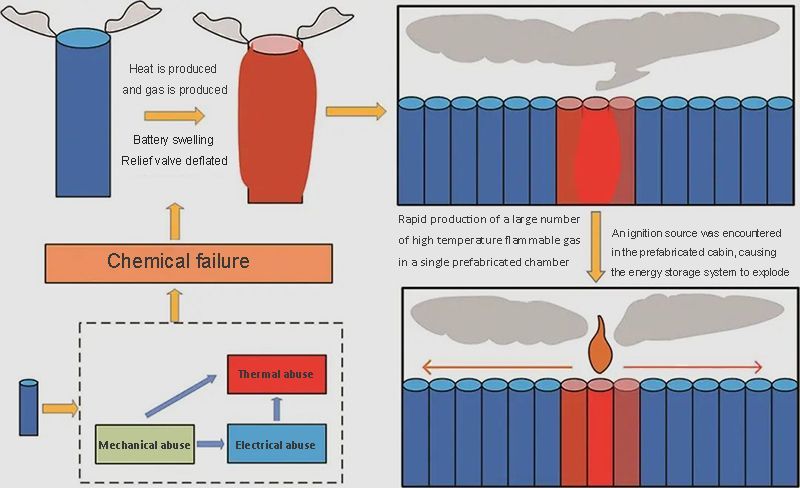
FIG. 1 Thermal runaway evolution process of lithium electric energy storage system
1. Thermal runaway characteristics and evolution process of batteries in energy storage power stations
At present, the global research on the thermal runaway characteristics and evolution process of lithium-ion cell mainly focuses on four aspects, namely, the internal reaction time sequence law, the characteristic temperature law, the thermal runaway gas production law and the internal short-circuit mechanism under a variety of abuse conditions.
① Internal reaction time sequence law
Thermal runaway is an irreversible temperature rise phenomenon caused by the sum of a variety of side reactions occurring at higher rates. The reason for thermal runaway is the overlapping cross-side reactions occurring at the same time and space under a variety of abuse conditions. When the side reaction reaches a certain degree, the diaphragm collapse causes a short circuit in the battery to release a large amount of heat instantaneously, resulting in the thermal runaway of the battery, as shown in Figure 2.
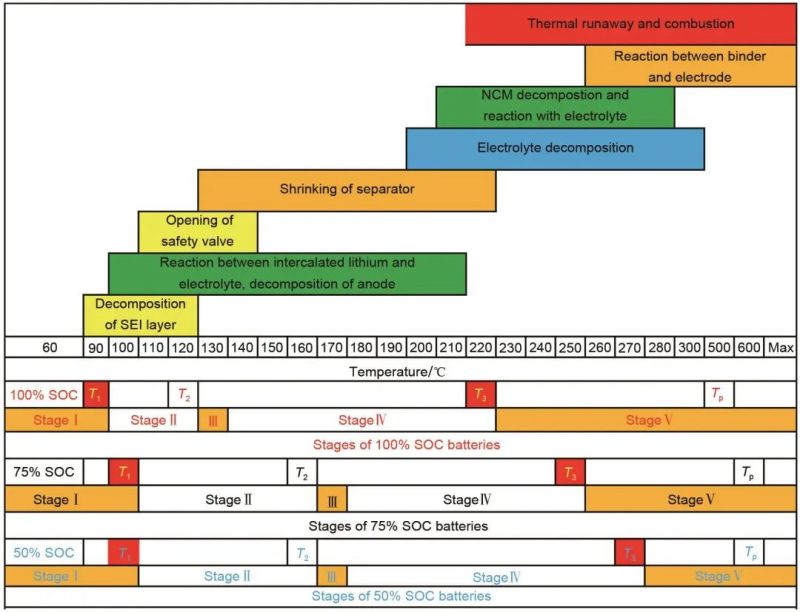
FIG. 2 Thermal runaway reaction sequence and temperature range
At present, it is generally believed that the following side reactions may occur in the battery from low temperature to high temperature after abuse: SEI film decomposition, thermal decomposition of positive electrode materials, reaction between lithium embedded carbon and electrolyte, thermal decomposition of electrolyte, reaction between positive electrode materials and electrolyte, reaction between lithium embedded carbon and binder, etc. These reactions are more likely to overlap at a certain temperature. When the heat accumulates to a certain extent, the diaphragm collapses, leading to an internal short circuit, and then thermal runaway occurs to increase the reaction rate to a certain extent, resulting in ejection fire and deflagration.
② Characteristic temperature law
Feng et al. revealed the characteristic temperature rule of thermal runaway, and believed that thermal runaway has three characteristic temperatures T1, T2 and T3, as shown in FIG. 3. T1 is the initial temperature of thermogenesis. From this temperature, the internal active substance begins to have obvious exothermic reactions. At this stage, the reactions overlap and last for a long time. T2 is the thermal runaway trigger temperature, which indicates that internal short circuit occurs inside the battery. Thermal runaway occurs at this time, the temperature rises instantaneously, gas is generated and accumulated rapidly, and jet flame is easy to form. T3 is the maximum thermal runaway temperature, which indicates the maximum temperature that the battery can reach when the thermoelectric chemical energy is released. This temperature generally corresponds to the highest heat release rate, and almost occurs at the same time as the thermal runaway triggering temperature T2. The characteristic temperature law of thermal runaway can provide reference for the prevention and control technology and measures of thermal runaway, that is, if the evolution signal of thermal runaway can be identified in the early stage of thermal runaway, the occurrence of fire accidents can be avoided.
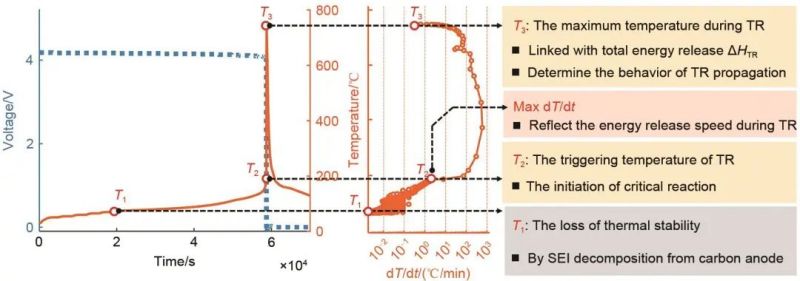
FIG. 3 Characteristic temperature law of thermal runaway
③ Gas production law
In addition to heat, the side reaction inside the cell also releases gas. The special phenomenon of lithium battery fire is the rapid generation of combustible gas in the confined space of battery shell. Combined with the current measurement of thermal runaway gas components, it is found that the common gases produced include CO, H2, CO2, CH4, C2H6, HF, electrolyte vapor, etc. The understanding of thermal runaway gas production law is helpful to understand the characteristics of battery ignition and explosion and provide prevention and control ideas.
④ Internal short circuit mechanism
The present study shows that the internal short circuit is caused by diaphragm collapse, which is the direct cause of thermal runaway. A large amount of heat is released instantly after the battery is short-circuited, which makes the battery temperature rise rapidly and the battery thermal runaway occurs. The research on the mechanism of short circuit in battery is helpful to understand the process of thermal runaway and predict the short circuit in battery.
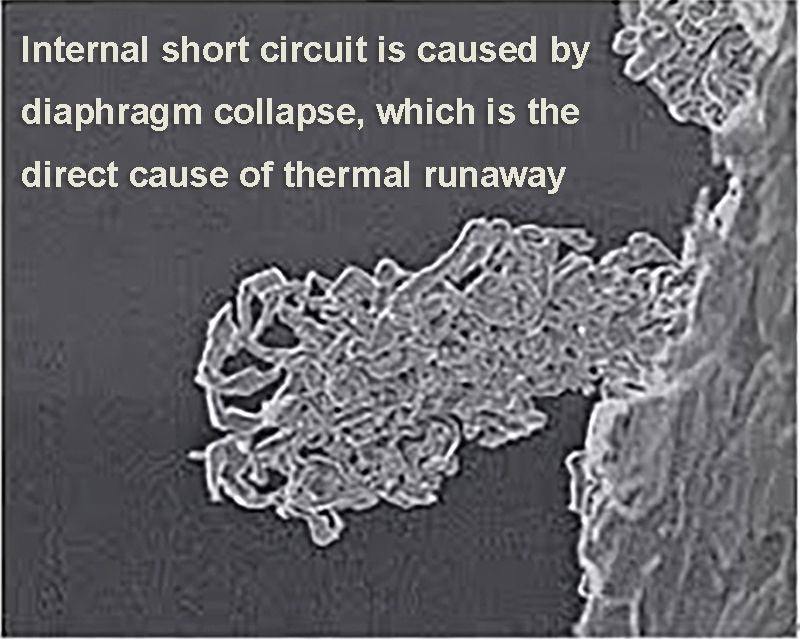
In conclusion, in the process of thermal runaway evolution, the side reactions of lithium-ion batteries will generate heat and gas. Accordingly, the thermal runaway evolution process of lithium-ion batteries in energy storage power stations can be divided into six processes according to their thermal runaway characteristics: heat release, gas production, pressurization, smoke injection, fire combustion and gas explosion. Understanding these six processes based on thermal runaway characteristics is the basis of thermal runaway prevention and control technology.
2.Thermal runaway monitoring and early warning technology of energy storage system
According to the above characteristic temperature law of thermal runaway of lithium battery, the six processes of thermal runaway evolution are divided into three stages, as shown in Figure 4. The characteristic signals appearing in the six processes of thermal runaway evolution of batteries are electrical signals (voltage, current, resistance), temperature signals, gas signals, smoke signals, flame signals, etc. Different techniques can identify the characteristic signals in different stages of thermal runaway. In order to realize the essential safety of the energy storage power station, this article only introduces the monitoring and warning technology in the early stage of thermal runaway and the occurrence period of thermal runaway.
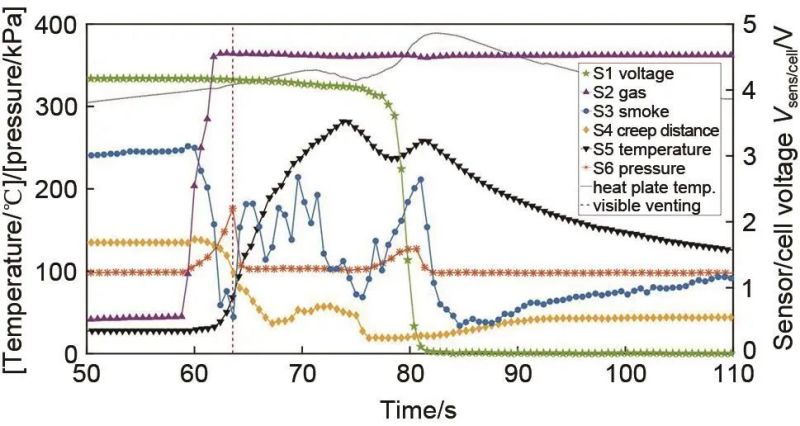
FIG. 4 Change process of thermal runaway monitoring and warning signal
① Temperature signal
Temperature is the most important signal in the process of thermal runaway. Thermal runaway of battery is the irreversible rise of temperature. Thermal runaway is an uncontrolled temperature rise process caused by many side reactions, which is a coupled nonlinear process of thermal and electrical abuse, rather than a stable temperature rise process. Therefore, only measuring the surface temperature can not accurately determine whether the battery has thermal runaway.
Wang et al. used infrared thermal imaging technology to obtain the temperature distribution of lithium batteries under different discharge rates and depths, which could well observe the variation law of battery temperature field with time and space. Monitoring the temperature of lithium battery based on optical fiber sensor is also considered to be a high precision measurement scheme.
② Gas signal
Thermal runaway deflated phenomenon has been reported many, the main components of the released gas are CO, CO2, HF, H2, electrolyte vapor. Jin et al. reported an early warning method for thermal runaway based on detection of H2. The method found that lithium dendrite formation could be detected based on detection of H2 concentration, and it could be identified by detection of H2 concentration even at micron scale.
③ Electrical signals
Electrical signal is an important signal for battery management system monitoring, and the research on the change of electrical signal during thermal runaway is the key to early warning. Feng et al. showed a time delay of about 15 s between voltage drop and temperature rise in large-capacity lithium-ion batteries using a large-scale accelerated calorimeter. At the same time, it is found that the resistance of the battery increases gradually with the increase of battery temperature by the method of charging and discharging with small current pulse.
The built-in voltage sensor of BMS for lithium ion battery can monitor the terminal voltage of the battery well. Once an abnormal signal is detected, an alarm can be issued very quickly. The advantage of voltage monitoring is the ability to locate faulty cells within the module. As there are a large number of batteries in an energy storage power station, more voltage sensors need to be deployed. At present, the monitoring and early warning equipment of energy storage power station is mainly smoke alarm and temperature sensor.
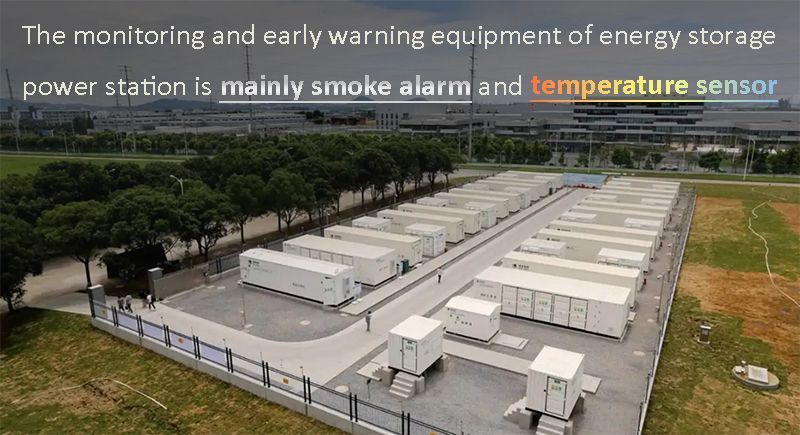
3.Control and fire suppression, explosion suppression technology of thermal runaway
The cells in the battery pack of the energy storage power station are highly dense, and it is easy to form the situation of thermal runaway expansion and spread. At this time, it is difficult to dissipate heat, and heat and combustible gas will slowly accumulate. If the flammable gas diffuses and accumulates in the confined space after migration, it may explode after delayed ignition. From the point of view of the chemical system of battery and the self-generated thermal characteristics of thermal runaway, battery fire is the hot gas caused by the self-reaction of energetic materials. Based on the above-mentioned three stages and six processes of thermal runaway evolution, it is critical to take targeted prevention and control measures.
① Thermal runaway suppression technology
The existing thermal runaway control techniques mainly focus on cooling and barrier.
- Thermal runaway cooling suppression technology
In terms of cooling means, it is found that for high SOC, it is difficult to suppress thermal runaway with fine water mist, and the temperature is reduced by 20 ℃. For low SOC, the surface temperature decreases by at least 83.8℃, which indicates that the fine water mist is more capable of cooling the thermal runaway of the low SOC battery. For the module, the cooling coefficient is defined to determine the cooling effect of the fine water mist, and it is considered that the thermal runaway can be successfully prevented when the cell surface temperature drops below 100 ℃. Batteries in energy storage power stations are generally connected in series and parallel, and the connection mode has a great influence on thermal runaway propagation. It is found that cells connected in parallel exhibit a lower thermal runaway onset temperature, which leads to a decrease in the critical temperature node for the action of fine water mist.
Liquid nitrogen can also be used for cooling. The results showed that the inhibitory effect of liquid nitrogen on the cell was weakened with the increase of the cell surface temperature, but spraying 29.3 g of liquid nitrogen reduced the surface temperature of 9.24 Wh cell from 700 ℃ to 100 ℃ in 80 s, showing a high cooling capacity. Due to the complex engineering layout of liquid nitrogen, the scale application is limited.
- Thermal runaway barrier inhibition technology
In the barrier technology, graphite composite plate and aluminum filler can effectively inhibit the thermal runaway propagation, and the thermal runaway propagation of lithium battery pack with barrier material can also be inhibited. The study of Weng et al. also showed that thermal runaway barrier technology of composite phase change materials can effectively suppress thermal runaway propagation and limit fire load, which is of great significance for fire prevention and control.
② Lithium battery fire extinguishing technology
The research focus of lithium ion battery fire extinguishing technology is mainly on the development and utilization of fire extinguishing media. FIG. 5 shows the effects and strategies of common lithium battery fire extinguishing media, indicating that the fire extinguishing media with strong cooling capacity has a good suppression effect on lithium battery fire.
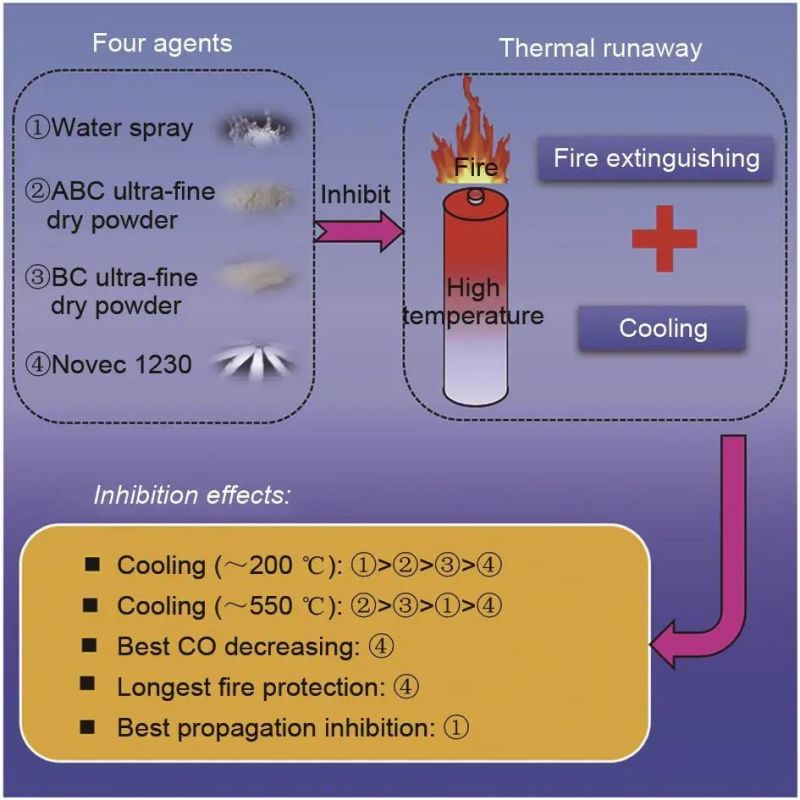
FIG. 5 Effect of lithium battery fire extinguishing medium and fire extinguishing strategy
Lithium-ion battery fire is a gas fire that can maintain high temperature. Therefore, we should pay more attention to the development of efficient gas extinguishing agent and continuous cooling agent. At present, the research on fire extinguishing media mainly focuses on carbon dioxide, dry powder, foam, aerosol, HFC-227EA, perfluorohexanone, fine water mist and other fire extinguishing agents.
③ Explosion suppression technology for energy storage power station
After a short circuit in the battery of an energy storage station causes a fire and combustion, the heat uncontrolled transfer phenomenon is easy to occur due to the highly dense arrangement of the batteries. At this time, the battery in the adjacent area is in the process of thermal runaway evolution, and a large amount of combustible gas will be generated and accumulated in the confined space, which will cause explosion under certain conditions.
Energy storage power station explosion is a gas explosion, which generally has two forms according to the battery type: delayed ignition explosion and supplemental oxygen explosion.
The core of explosion suppression technology in energy storage power station is to prevent combustible gas from accumulating in restricted space to reach the explosion limit. Active ventilation measures are necessary and critical, which require studies of gas production rates, total gas production, and gas composition in large-scale cell arrays. In addition, the development of explosion suppressor is also a feasible scheme. Zhu et al. studied the explosion suppressor efficiency of fine water mist as explosion suppressor when combustible gas is produced in large quantities.
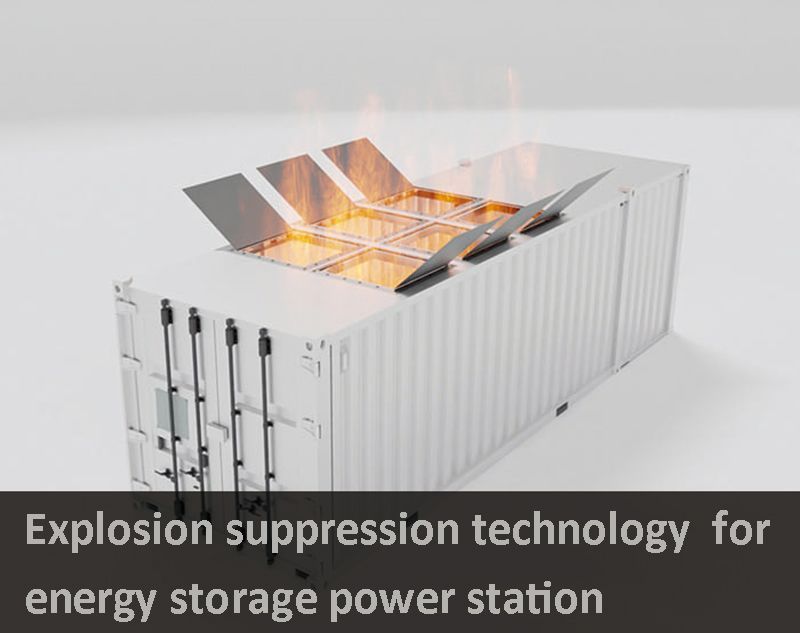
4.Conclusion and prospect
This article reviews the thermal runaway characteristics, evolution process rules and prevention and control techniques of lithium batteries in energy storage power stations, and obtains the following conclusions.
■ The thermal runaway evolution process of lithium-ion batteries in energy storage power stations under external abuse conditions can be divided into three stages and six processes. Each stage of the whole evolution process is overlapping. Only by deeply understanding the thermal runaway characteristics and evolution process of lithium batteries can reliable and advanced monitoring and early warning, suppression, fire suppression and explosion suppression technologies be obtained.
■ In terms of monitoring and early warning of energy storage power stations, electrical signal, temperature signal and gas signal as a single monitoring signal have poor early warning effect. In the future, it is necessary to build a multi-parameter coupling monitoring and early warning technology for the whole process of thermal runaway based on electrical signals, temperature and gas signals as the core, and smoke and flame signals as the auxiliary.
■ In the early stage of fire, according to the characteristics of lithium battery fire, fire extinguishing media or fire extinguishing technology that can not only extinguish gas fire, but also effectively reduce temperature should be used to suppress the fire of energy storage power station. At the same time, the characteristics of gas diffusion and delayed ignition and explosion after migration accumulation in restricted space are easy to occur after thermal runaway of lithium batteries in energy storage power stations. Accordingly, effective ventilation dilution, inerting and explosion suppression technologies can be developed.
Paper information:
First author: Yu Hang (1997 -), male, master. Research interest covers monitoring, early warning and accident disposal technology of energy storage power stations. E-mail: yuhzhouyu@163.com;
Related articles :top 10 home energy storage battery companies , top 5 energy storage BMS companies,